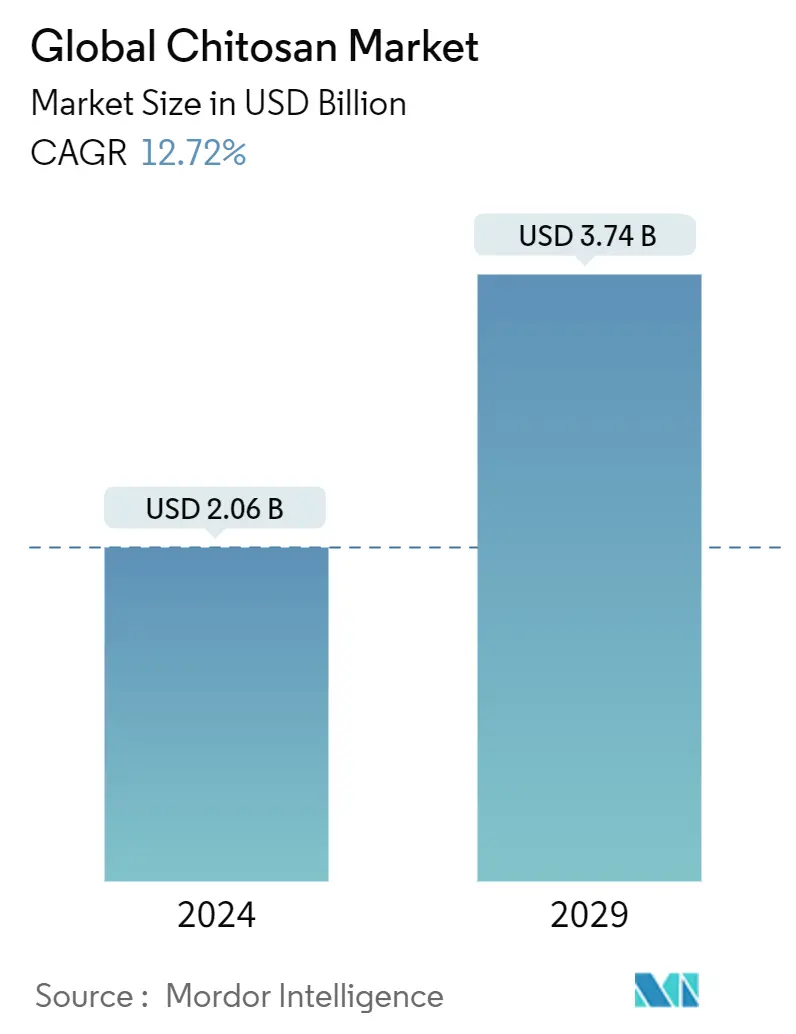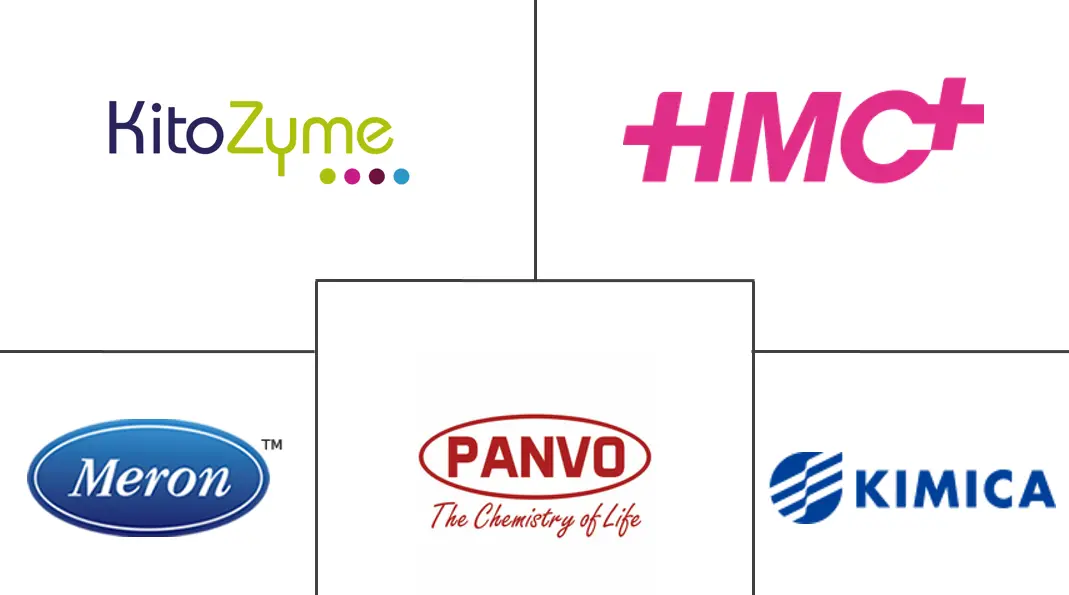Market Size of Global Chitosan Industry

| Study Period | 2019 - 2029 |
| Market Size (2024) | USD 2.06 Billion |
| Market Size (2029) | USD 3.74 Billion |
| CAGR (2024 - 2029) | 12.72 % |
| Fastest Growing Market | Asia Pacific |
| Largest Market | North America |
Major Players
*Disclaimer: Major Players sorted in no particular order |
Need a report that reflects how COVID-19 has impacted this market and its growth?
Chitosan Market Analysis
The Global Chitosan Market size is estimated at USD 2.06 billion in 2024, and is expected to reach USD 3.74 billion by 2029, growing at a CAGR of 12.72% during the forecast period (2024-2029).
The Global Chitosan Market size is estimated at USD 2.09 billion in 2024, and is expected to reach USD 3.67 billion by 2029, growing at a CAGR of 11.93% during the forecast period (2024-2029).
Globally, researchers are showing interest in the use of chitosan in the pharmaceutical and biomedical fields as a potential agent for the prevention and treatment of infectious diseases. In December 2019, China became the epicenter of the SARS-CoV-2 outbreak, which has since spread internationally. In 2020, the World Health Organization (WHO) declared COVID-19 to be a global health emergency. Countering the impacts of viral disease outbreaks such as COVID-19 required R&D activities by researchers across the globe. Thus, the COVID-19 outbreak is likely to show a positive impact on the market growth as the application of chitosan polymers as viral inhibitors would generate key growth opportunities in the near future.
Furthermore, biopolymers such as chitosan have intrinsic antiviral properties. Nanostructured drug-delivery systems (NDDS)-based carbohydrate-binding agents, such as the sulfated polymers, can also change the virus entry process, blocking the viral cationic surface receptors and avoiding its interaction with heparan sulfate proteoglycan on the host cell surface. However, there are no reports of NDDS as COVID-19 treatment so far. It can be a new approach for COVID-19 treatment in the near future.
The other factors driving the market growth include growing product applications in biomedical, cosmetics, and food and beverage industries, rising water treatment activities worldwide, and strong advancements in the healthcare/medical industry in developed countries.
Chitosan composed systems utilize the characteristics of chitosan to achieve great therapeutic effects. For instance, the adhesiveness of chitosan can be used for non-invasive mucosal vaccine vectors. Therefore, chitosan-composed systems have great potential in the therapy of infectious diseases.
Chitosan is a natural polysaccharide that exhibits properties such as biodegradability, non-toxicity, biocompatibility, hemostatic and bio-adhesiveness, and penetration-enhancing properties. Moreover, it has anti-microbial properties.
As per National Center for Biotechnology Information (NCBI), deacetylated chitosan is a vital additive in filtration and water treatment, which eliminates 99% of turbidity. Moreover, chitosan is an easily available product extracted from a waste product in the fishery industry with several uses in other industries such as wound care material in pharmaceutical industries, acts as a natural flavor, and used to control moisture in food industries leading to the high demand for these polymer and further boost the overall market.
Furthermore, stringent government regulations are forcing manufactures to reduce plastic bags, resulting in the growing demand for biodegradable plastic where chitin is being widely used. This led to the increasing adoption of chitosan and further drive the market growth over the forecast period.
